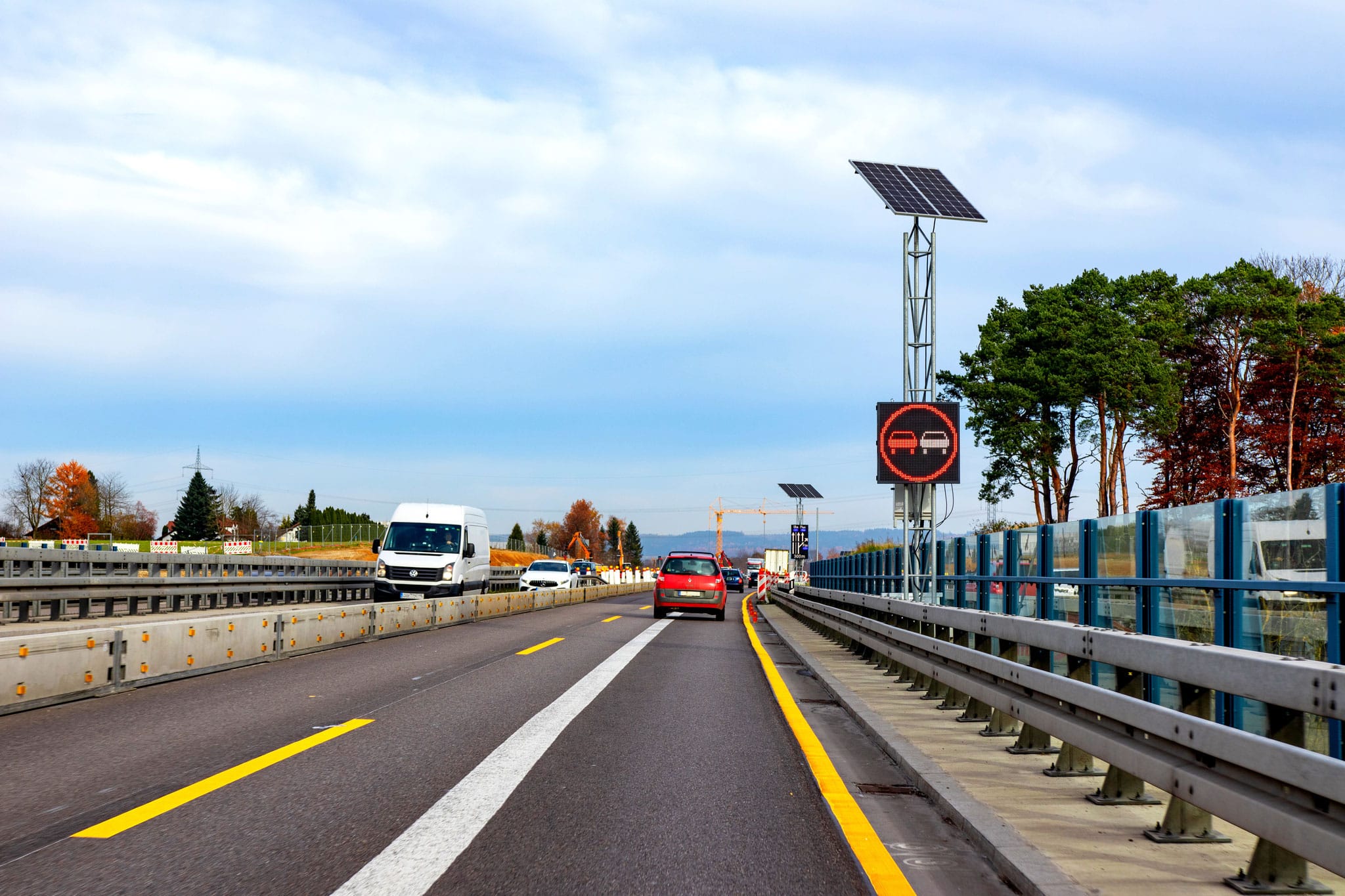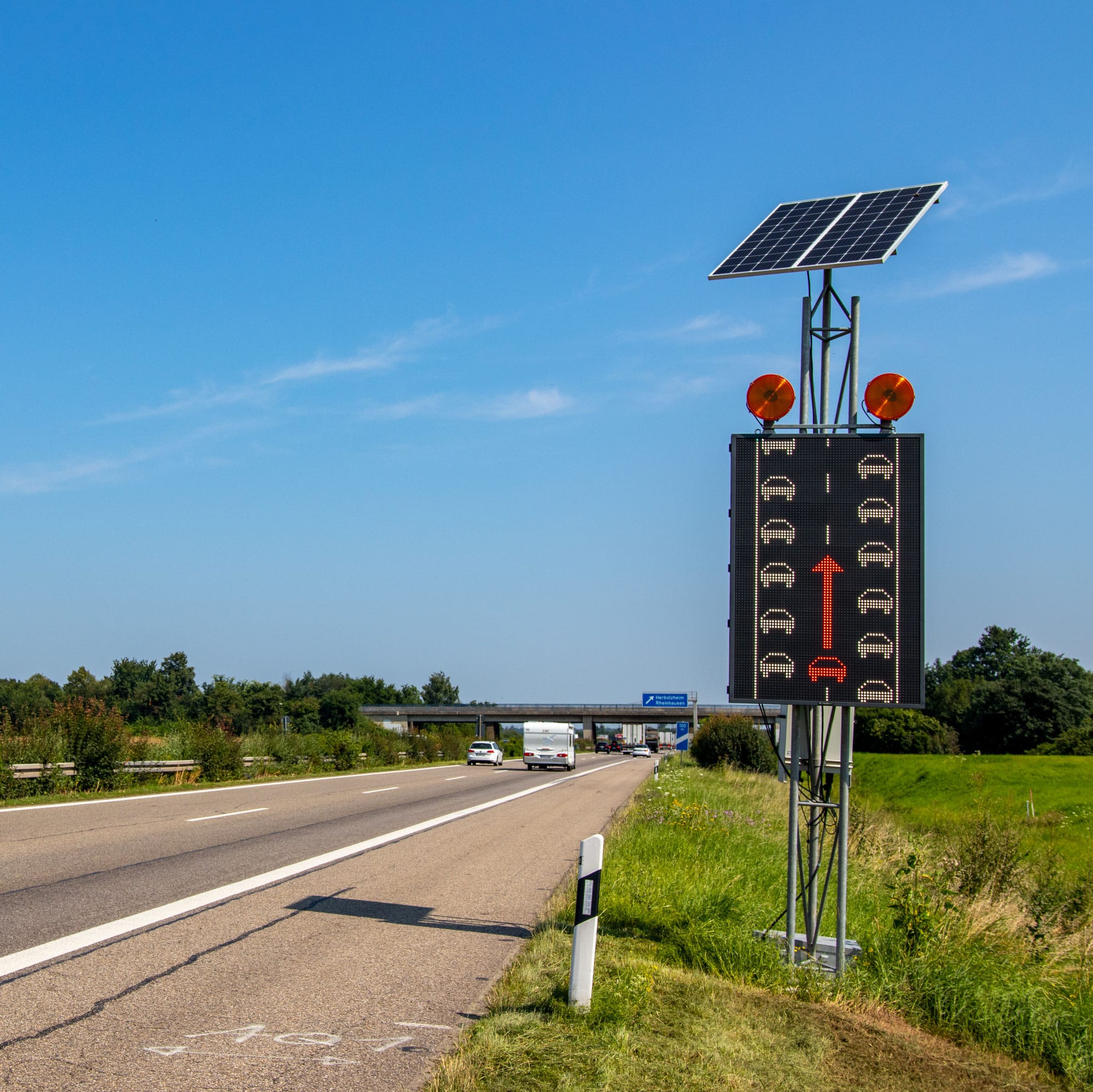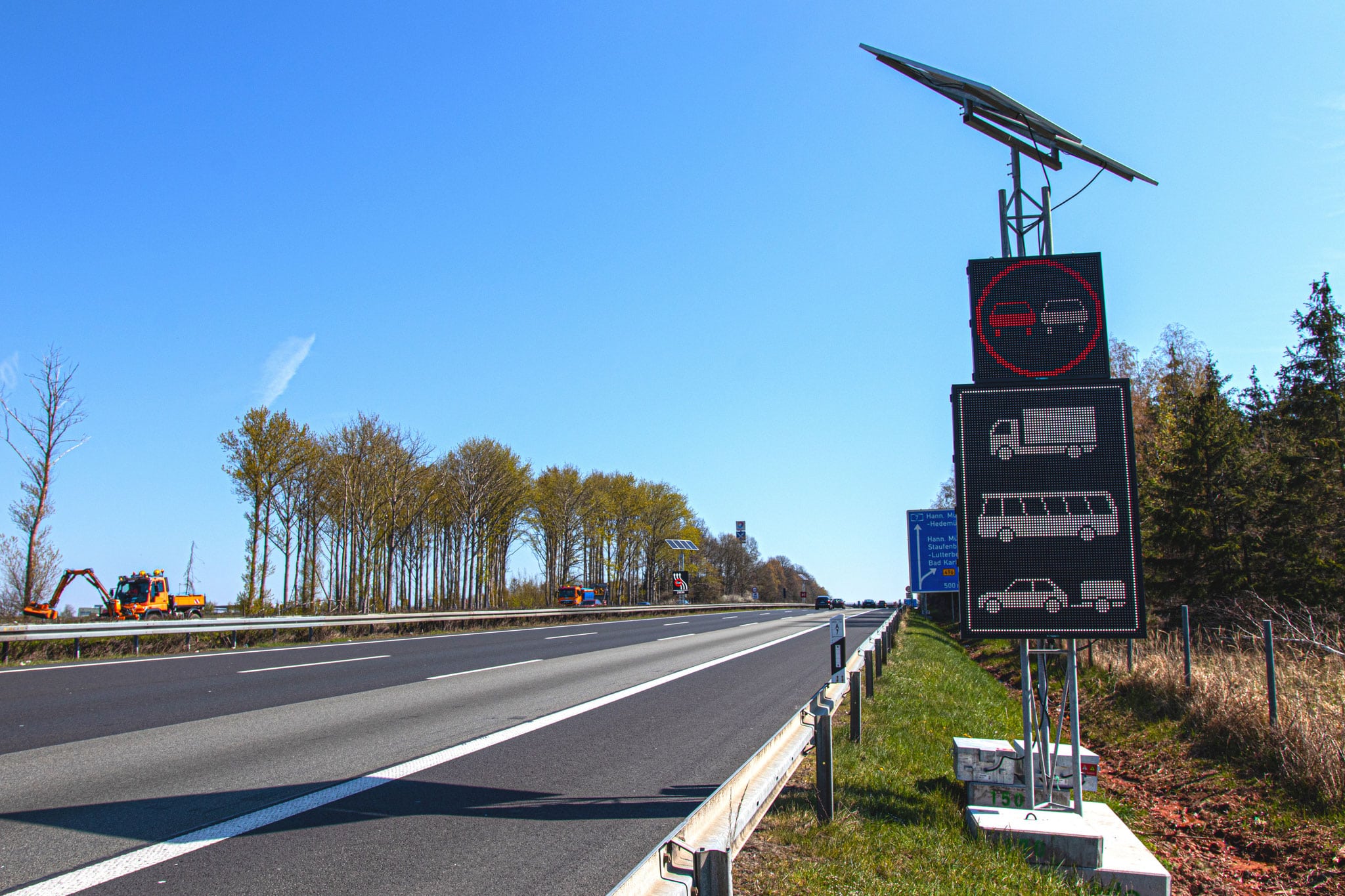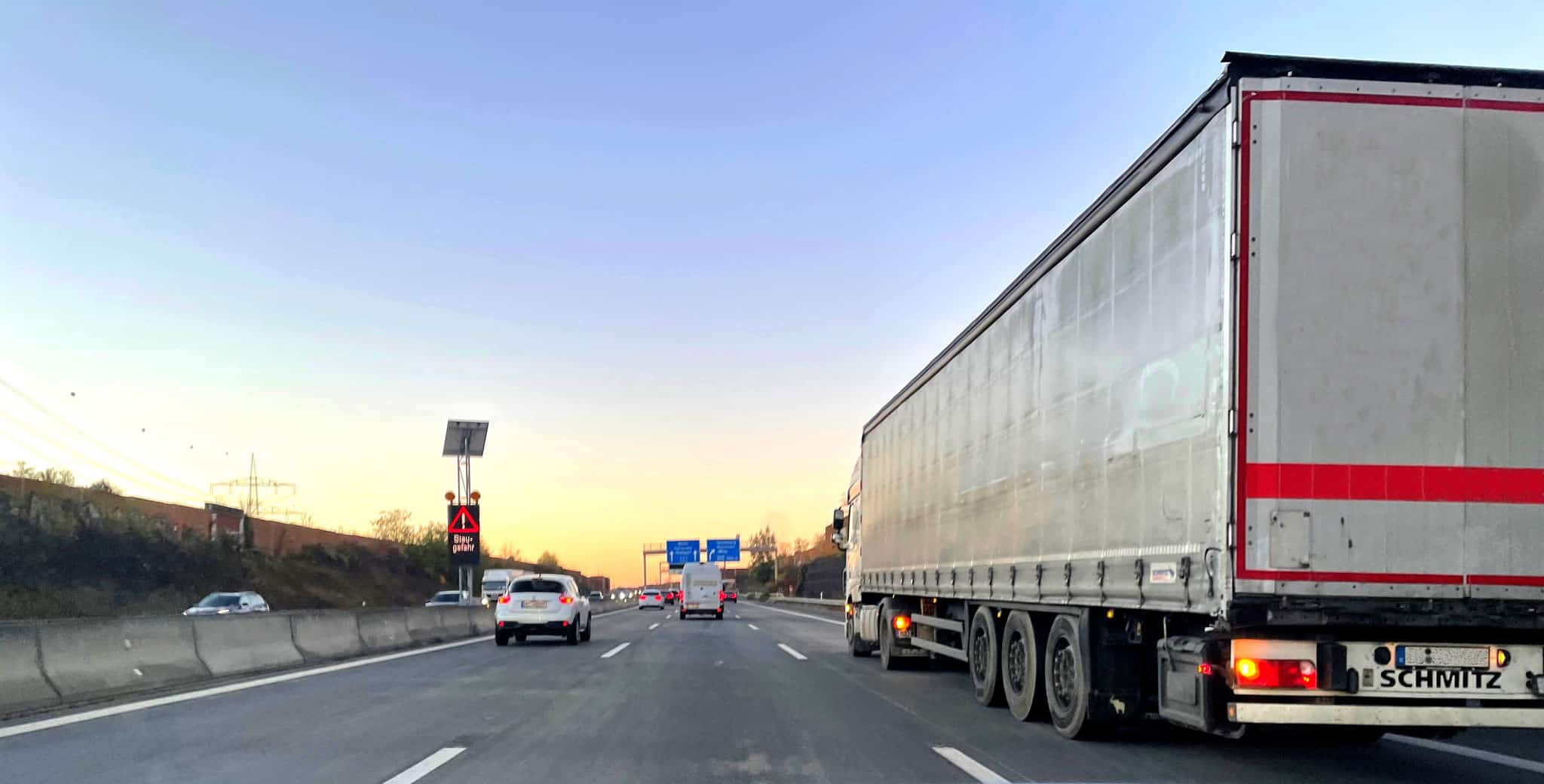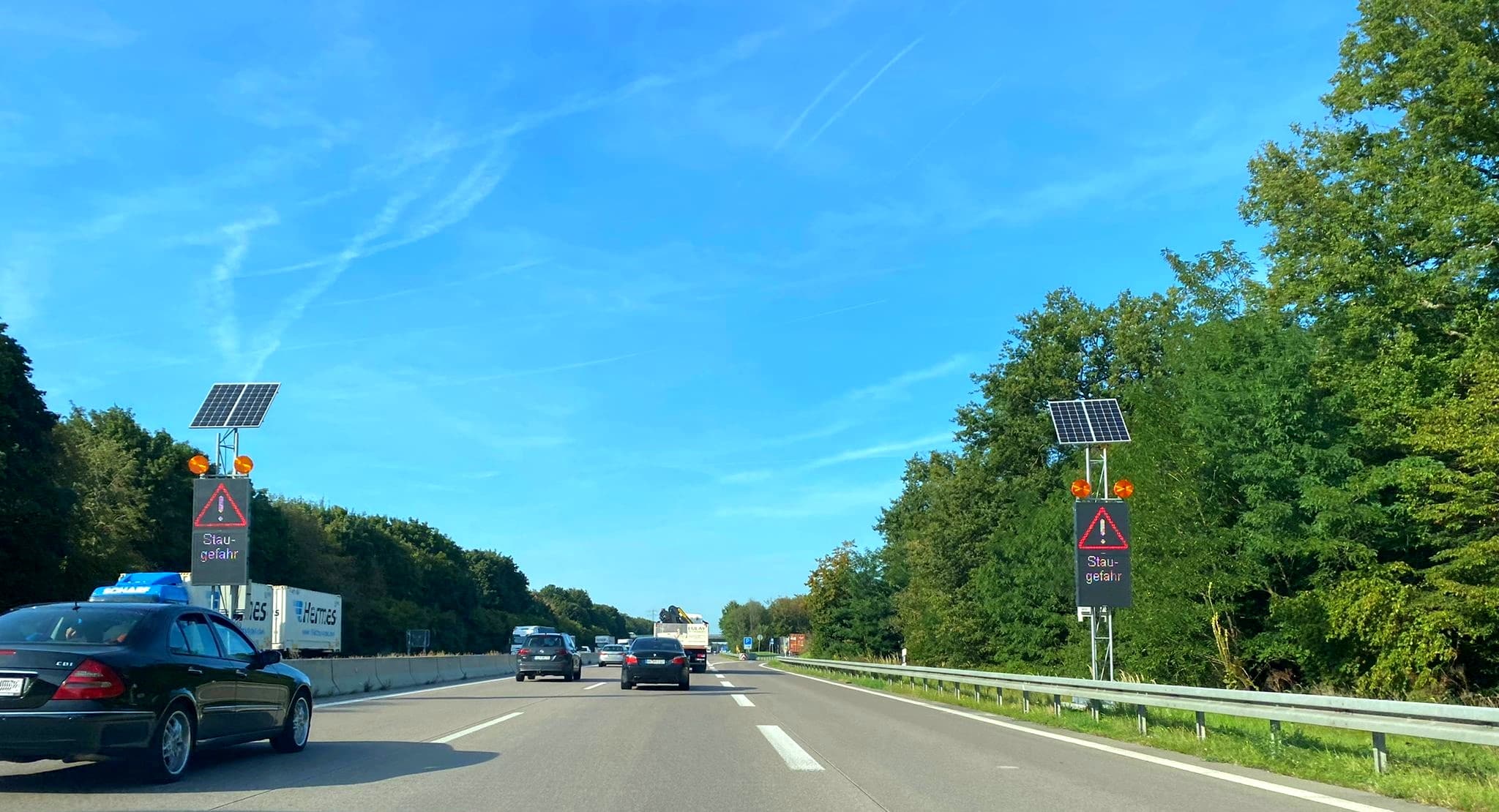Independent with solar power from SOLARA
Solar power for autonomous traffic systems, traffic control. Car2X, V2X, Vehicles, FIPV/VIPV
A multitude of products and devices have to be supplied with electricity independent of the grid. Either there is no grid connection available or the connection is too expensive and extravagantly. On top of that there are over two billion people on the earth without access to the regular grid.
But without electricity, many devices do not work today. Parking ticket machines, street lighting, as well as the entire communication via mobile phone or internet often only work based on a reliable power supply. Whether traffic systems, traffic control or Car2X/V2X, everything is possible everywhere thanks to solar. SOLARA solar modules and complete stand-alone systems, also known as stand-alone systems or OFF-GRID SYSTEMS, produce the necessary electricity in an environmentally friendly way without emissions. SOLARA also has the right solar modules for FIPV/VIPV. SOLARA has high-quality and affordable solutions for reliable solar electrification. For locations without a suitable power connection or remote regions, we have a self-sufficient solar power supply.
Many important applications – safely and reliably supplied with solar power!
Intelligent traffic systems of the future with solar energy
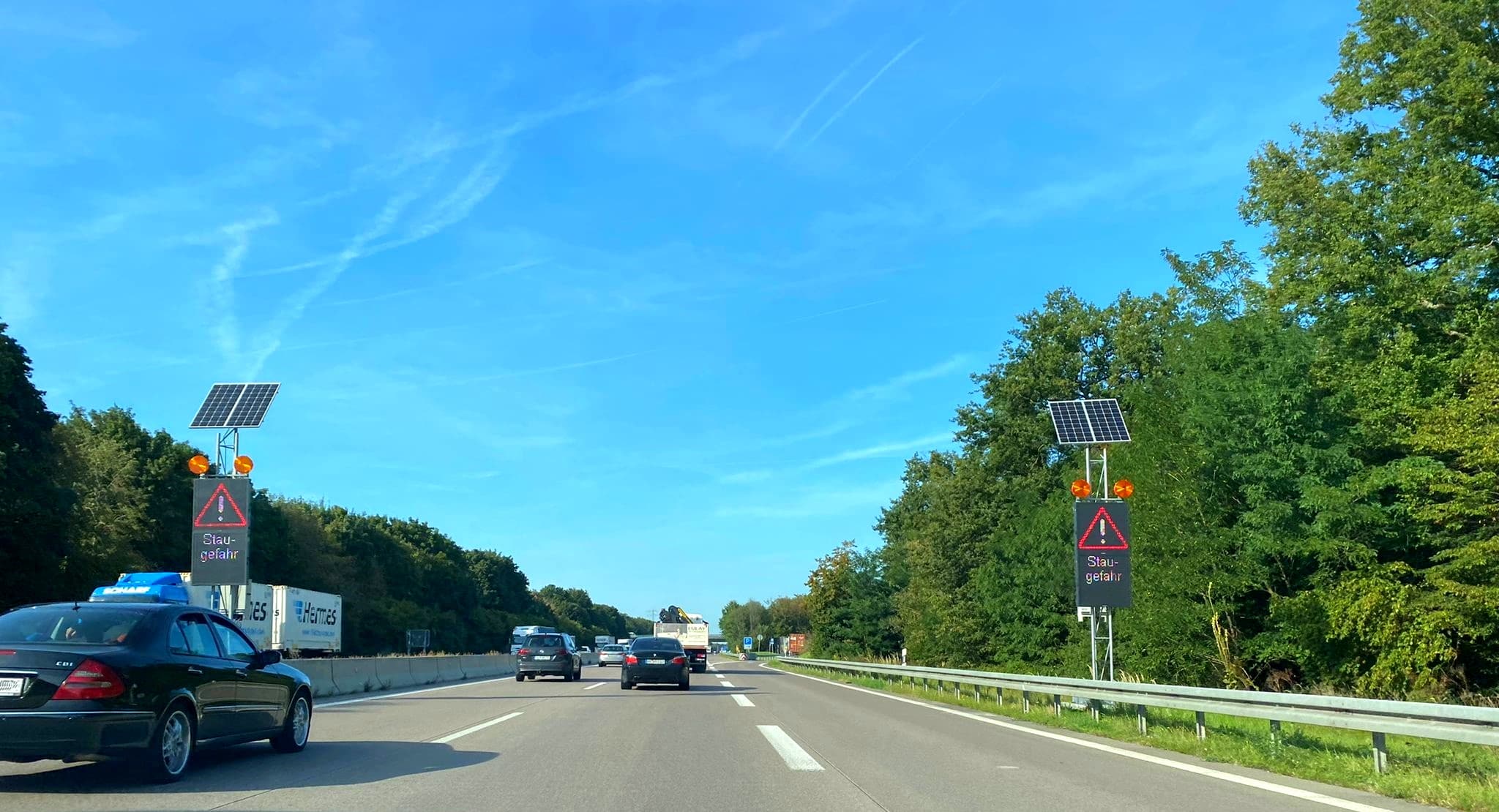
Modern and sustainable traffic technology 4.0 with solar modules from SOLARA
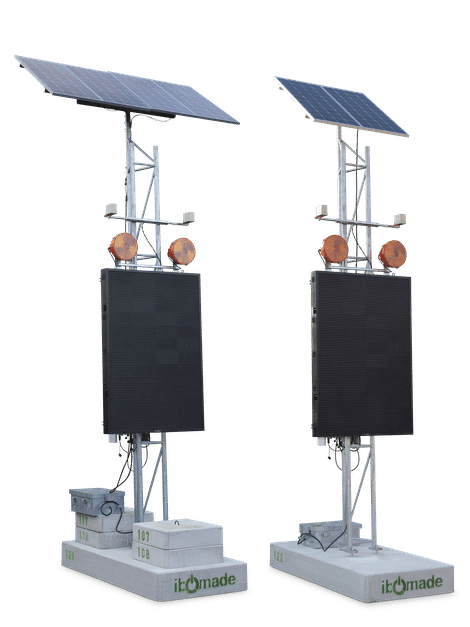
Mobile LED traffic jam warning system
The mobile LED traffic jam warning system from IBOMADE is an intelligent traffic jam detection system with state-of-the-art technology – an innovation for more traffic safety and modern traffic management.
Dynamic diversions signage
Dynamic diversions signage is a smart traffic technology for intelligent traffic management – automated diversions recommendations are no longer utopia, but part of the new reality thanks to IBOMADE.
Traffic data acquisition
Traffic load, congestion detection, wrong-way driver detection and much more – IBOMADE’s traffic data acquisition provides crucial data for various areas such as future-oriented traffic planning.
Variable message signs
The LED variable message signs are versatile and equipped with optimally matched components – the state-of-the-art traffic technology is energy-efficient, environmentally friendly and reliable.
Car2X or Car-to-infrastructure supplied by solar power

Image by Angelika Graczyk on Pixabay
Car2X or car-to-infrastructure powered by solar power are the future in modern mobility. The communicating vehicles need an appropriate infrastructure in cities and municipalities that can be supplied with solar power regardless of location.
Traffic lights can also be equipped with solar systems for this purpose so that they can communicate with cars in the future.
V2X-communication via WiFi hotspots by solar power
Communication between traffic lights and vehicles powered by solar power is independent of an electrical infrastructure. The traffic light systems are equipped with solar WiFi hotspots and are connected to a traffic control centre. This solar-powered technology is called V2X, where V stands for vehicle, and X for different devices or facilities. Via V2X, traffic lights can send data to cars via solar WiFi hotspots and also receive data via WiFi from vehicles. In addition, solar traffic lights send data to the so-called “mobility data marketplace”, which contains all information about traffic jams, construction sites, traffic flows and provides much more.
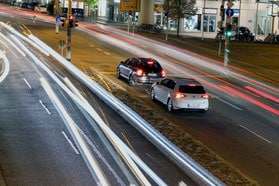
Image from Ildigo on Pixabay
Self-sufficient dynamic traffic control with solar panels – flexible control traffic situations.
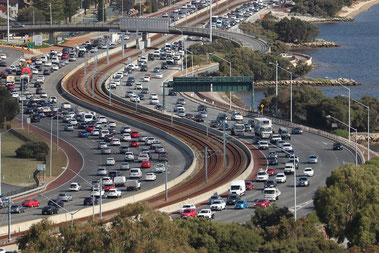
Image from Shaun Finn on Pixabay
Energy-efficient LED variable message signs equipped with solar systems enable road users to receive current traffic information on motorways and all other roads. Traffic signs and speed indicators equipped with solar cells help to prevent accidents and to positively influence the flow of traffic. Lanes can be flexibly displayed and changed with solar. Dynamic solar route information boards with a small solar system can display alternative routes at any location in the event of traffic jams or roadblocks. Measuring devices with solar cells as weigh-in-motion (weighing vehicles while driving) can also be used at locations without a power connection to monitor overloaded trucks.
Vehicles with integrated solar technology
Vehicle integrated photovoltaics (VIPV)
 Electromobility and solar power are the ideal combinations. A solar system on the roof, carport, car park etc generates electricity for the electric cars in the immediate vicinity.
Electromobility and solar power are the ideal combinations. A solar system on the roof, carport, car park etc generates electricity for the electric cars in the immediate vicinity.
Electric vehicles with a solar system are optimum. That makes the e-mobile completely independent of charging stations. Of course, it is important to install sufficient solar cells on or near the vehicle. On commercial vehicles, such as trucks or lorries, there can be sufficient space for solar modules. The whole thing is then called vehicle integrated PV (VIPV).
The first steps towards vehicle-integrated photovoltaics have been taken by a consortium around the Institute for Solar Energy Research in Hameln (ISFH). The ISFH has equipped a light commercial vehicle with photovoltaics (VIPV). The solar cells on the vehicle generate solar power from sunlight. Solar power charges the car’s high-voltage batteries. In this prototype, the solar power from the solar system is currently still used to extend the range of the vehicle. In this case, this means more range, less petrol/diesel consumption and considerable CO2 savings through vehicle-integrated photovoltaics.
The large body surfaces of a van or truck offer plenty of space for the installation of solar systems or solar modules. The photovoltaic surface or vehicle-integrated solar system not only charges the battery for the electric motor but also supplies electricity for the auxiliary units in the vehicle.
Vehicle integrated photovoltaics (VIPV)
 Integrated solar cells or solar modules have been available for several years in car sunroofs (e.g. at Audi) or on truck refrigerator boxes. Integrated photovoltaics have proven themselves there as an additional energy source for air conditioning or cooling. These solar applications usually run on low-voltage 12 V or 24V.
Integrated solar cells or solar modules have been available for several years in car sunroofs (e.g. at Audi) or on truck refrigerator boxes. Integrated photovoltaics have proven themselves there as an additional energy source for air conditioning or cooling. These solar applications usually run on low-voltage 12 V or 24V.
Vehicle integrated photovoltaics (VIPV) already existed in the sixties. However, the special streamlined lightweight solar vehicles with integrated solar cells were a niche. However, vehicles with integrated solar technology had to prove themselves in competitions worldwide even back then. Universities, researchers and students were the main drivers of the small solar vehicles with integrated solar modules or solar cells.
Solar outer skin, or solar bodywork
The Munich-based start-up Sono has developed the Sion concept electric vehicle with a solar outer skin, or solar body. Here, solar cells are integrated into the outer skin of the vehicle body. The solar skin or solar body supplies the car independently of an external power supply. The solar power from the solar skin or solar body is stored in the battery of the vehicle and is available for the drive and other electrical consumers and aggregates of the car.










